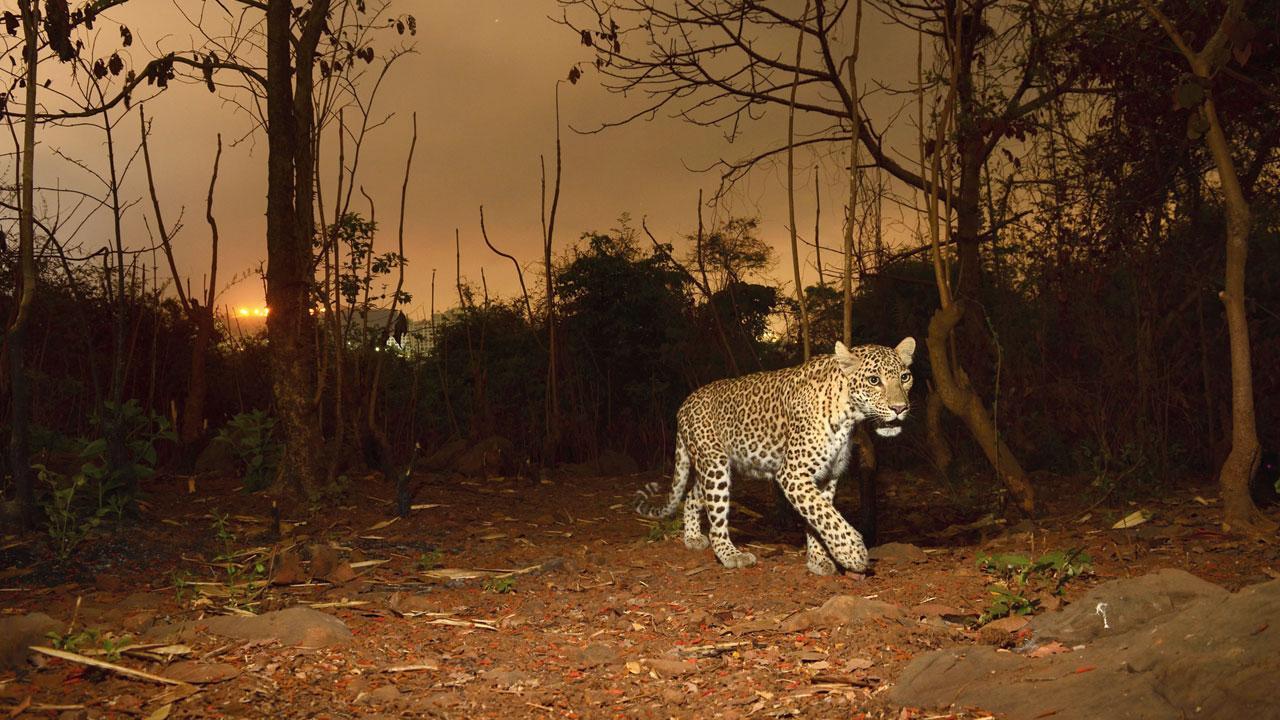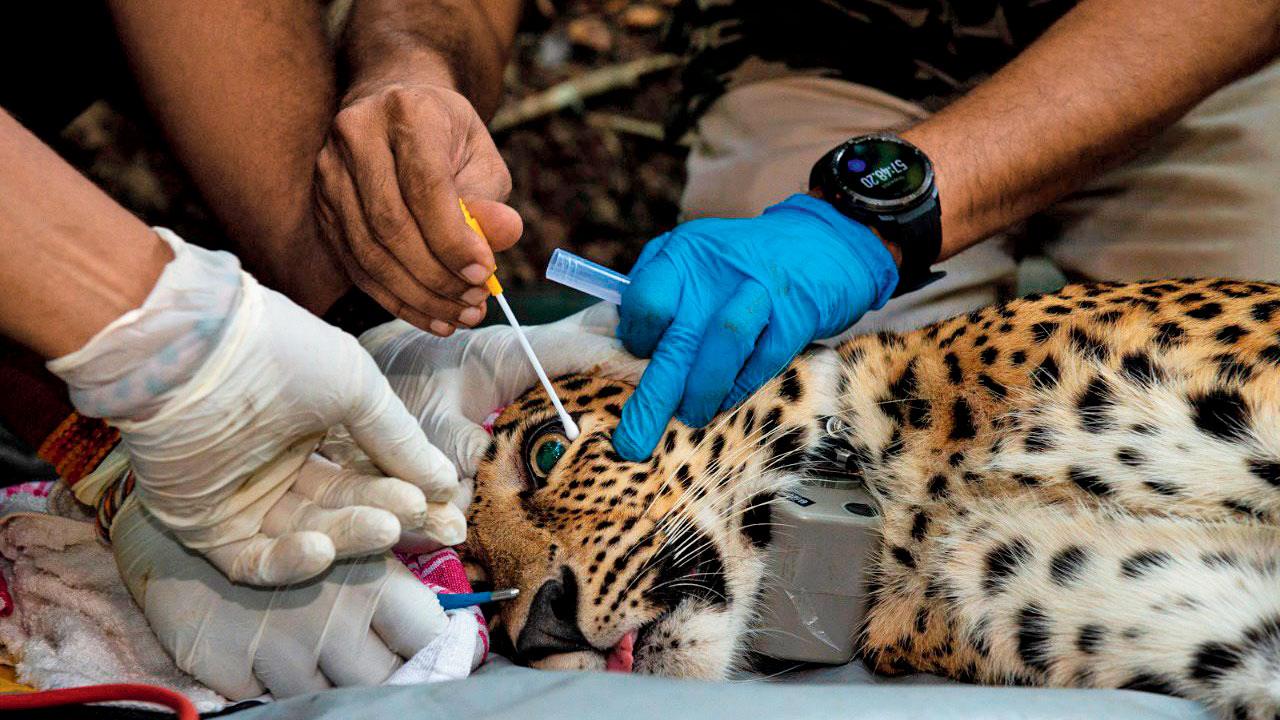Wildlife Institute of India to collar 10 big cats and 20 deer to study impact of Thane-Borivli underground tunnel below city’s green lung

A leopard in Sanjay Gandhi National Park. PIC/RANJEET JADHAV
Key Highlights
- Wildlife Institute of India will study the project’s impact on ground-dwelling animals
- To do this, WII plans to collar a total of 30 wild animals
- This will be the first time spotted deer and sambar will be radio-collared in SGNP
With the National Board of Wildlife (NBWL) approving the Thane-Borivli underground twin tunnel project by the MMRDA, which will pass below the Sanjay Gandhi National Park (SGNP), the Wildlife Institute of India (WII) will study the project’s impact on ground-dwelling animals. To do this, WII plans to collar a total of 30 wild animals, including leopards, spotted deer, and sambar deer. The collaring process for five leopards, five spotted deer, and five sambar deer is scheduled to take place after the monsoon. This will be the first time spotted deer and sambar will be radio-collared in SGNP.
ADVERTISEMENT
When the Ministry of Environment, Forest and Climate Change approved the twin tunnel, the government instructed that WII should do a study of the pre and post impact of the project work if any on the wildlife inside SGNP. Senior scientist Dr Bilal Habib from WII said, “The twin tunnels between Borivli and Thane are going to pass below SGNP and we are going to study if the pre (during construction) and post (after construction) ground vibrations will have any impact on ground-dwelling wild animals.

A leopard being fitted with a radio collar. PIC/NAYAN KHANOLKAR
The habitat (above the ground) is going to remain the same but there are chances that the ground-dwelling animals might sense the vibrations and we want to study how they react to the same. A radio telemetry study will be undertaken wherein we will radio collar three major wild species including leopard, spotted deer and sambar deer to study their movements before and after.” According to the plan, 10 leopards, 10 spotted deer and 10 sambar deer will be radio-collared. The collars fitted on the animals will have high-resolution activity sensors which are different from the normal radio collars that focus on location data.
“These radio collars will give us GPS locations by default, but at the same time, the activity sensor will provide data every five seconds. The collar will provide us activity details of the animal, like if it's resting, walking, moving etc. We will soon be applying for the required permissions and also start the process of purchasing the radio collars. Post-monsoon, we would start installing the collars. A total of 15 animals—five leopards, five spotted deer and five sambar deer—will be radio-collared during the construction activity the remaining 15 animals will be tagged after the twin tunnel work is completed. The collars will remain on each animal for one year so that we get the data for all seasons. The data output that we will get from this project will help us in planning better conservation strategies,” Habib added. The twin tube tunnel between Thane and Borivli will be constructed at a cost of over R14,400 crore. It seeks to reduce travel time between Thane and Borivli faster and decongest Ghodbunder Road.
The route will feature an 11.8-km-long connecting road and two 10.25-km-long three-lane tunnels built beneath SGNP, from Tikuji-ni-Wadi in Thane to the Western Express Highway in Borivli. Considering the tunnel will pass through SGNP, the Mumbai Metropolitan Region Development Authority (MMRDA) will take precautions to avoid causing harm to the park’s biodiversity, including the use of a tunnel boring machine to avoid upsetting flora and fauna. The tunnel is expected to take five and a half years to be completed from the day the tender is awarded.
There will be cross-tunnels every 300 metres, and the design will allow vehicles to travel at a top speed of 80 kmph. The new route is expected to shave off 40-45 minutes of travel time and reduce the need for 10.5 lakh metric tonnes of fuel per year. The initiative will contribute to an annual 36 per cent reduction in carbon dioxide emissions. Special measures would also be taken to ensure that the air within the constricted tunnel remains clean and fresh.
 Subscribe today by clicking the link and stay updated with the latest news!" Click here!
Subscribe today by clicking the link and stay updated with the latest news!" Click here!







